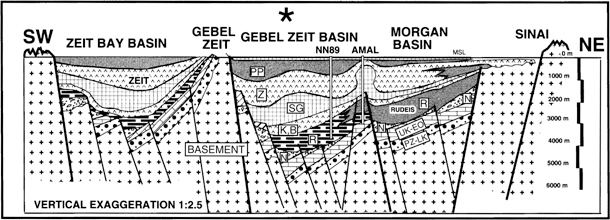 | ||
In geology, tectonostratigraphy is stratigraphy that refers either to rock sequences in which large-scale layering is caused by the stacking of thrust sheets, or nappes, in areas of thrust tectonics or to the effects of tectonics on lithostratigraphy.
Contents
Tectonically formed stratigraphy
One example of such a tectonostratigraphy is the Scandinavian Caledonides. Within the entire exposed 1800 km length of this orogenic belt the following sequence is recognised from the base upwards:
This vertically stacked sequence thus represents the passive margins of Baltica and Laurentia and intervening island arcs and back-arc basins telescoped together and emplaced on top of the Baltic Shield, involving hundreds of km of shortening.
Within this overall stratigraphy the individual layers have their own tectonostratigraphy of stacked thrust sheets.
Effects of active tectonics on lithostratigraphy
Tectonic events are typically recorded in sediments being deposited at the same time. In the case of a rift, for instance, the sedimentary sequence is normally broken down into three parts:
This relatively straightforward nomenclature may become difficult to use, however, in the case of multiphase rifting with the post-rift from one event being the pre-rift to a later event.
